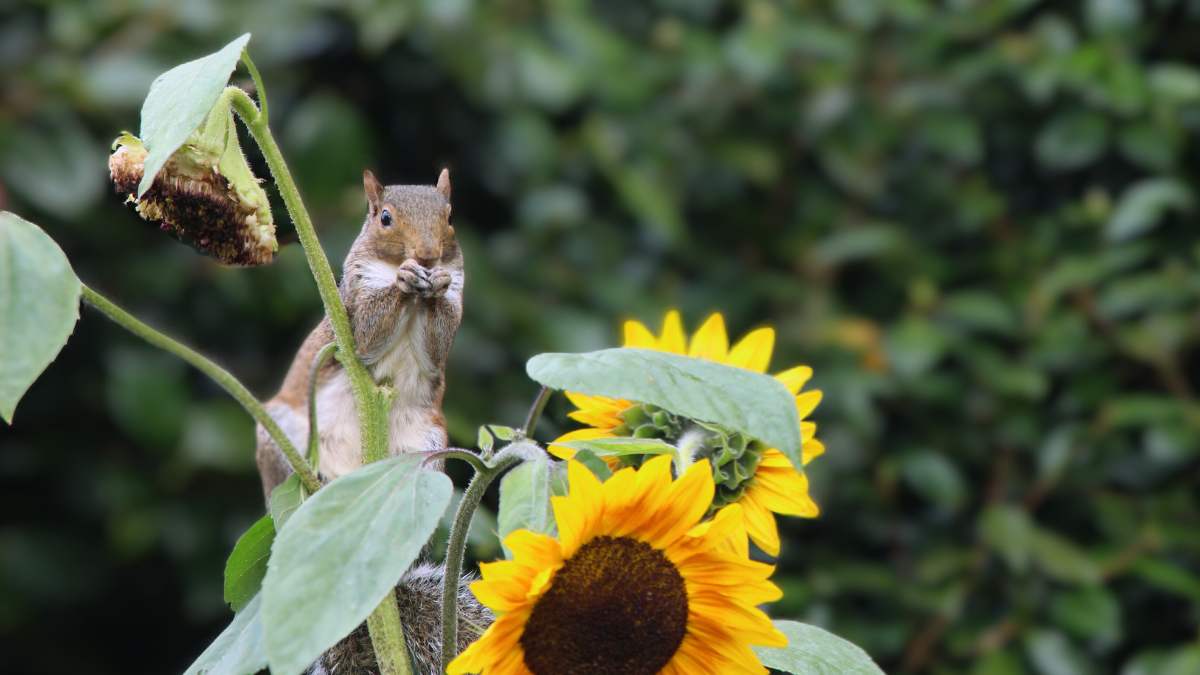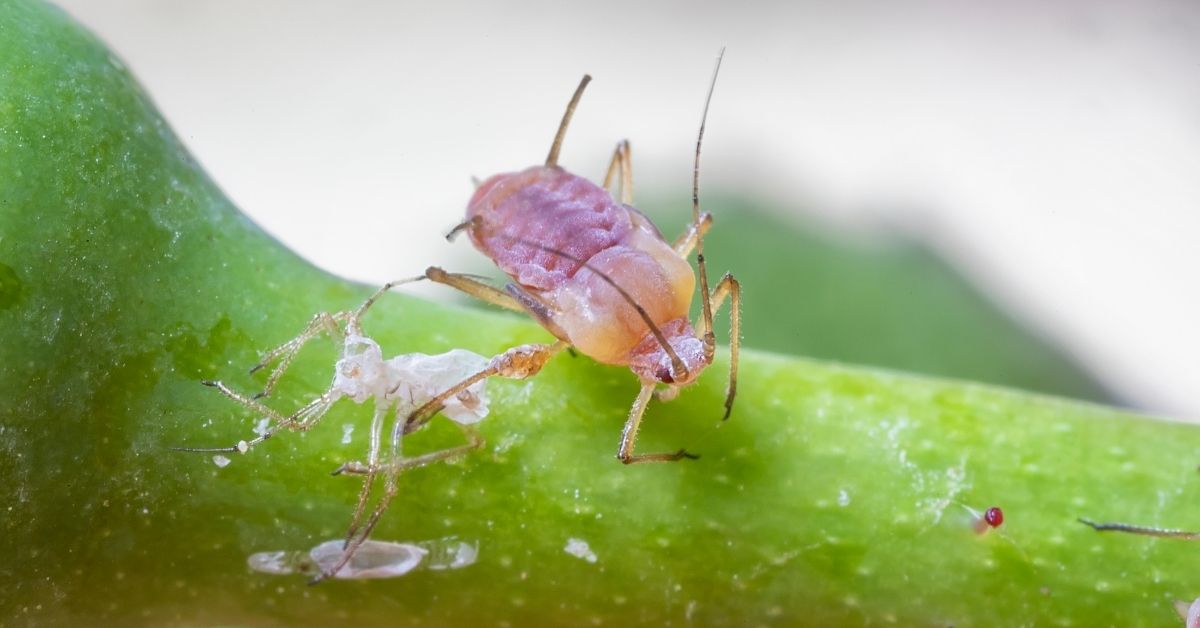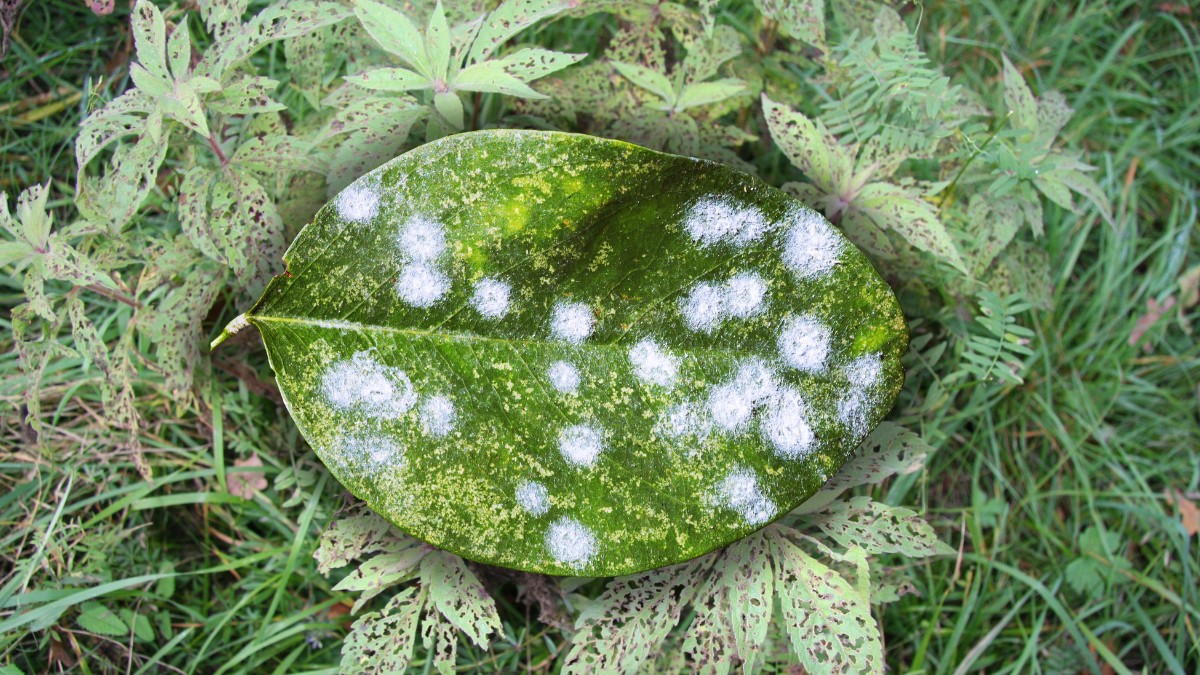Sunflowers are beautiful and cheerful plants that can brighten up any garden. However, they are also very attractive to squirrels, who love to munch on their seeds and petals. If you have ever grown sunflowers, you know how frustrating it can be to see them destroyed by these furry critters.
Do squirrels eat sunflower seeds?
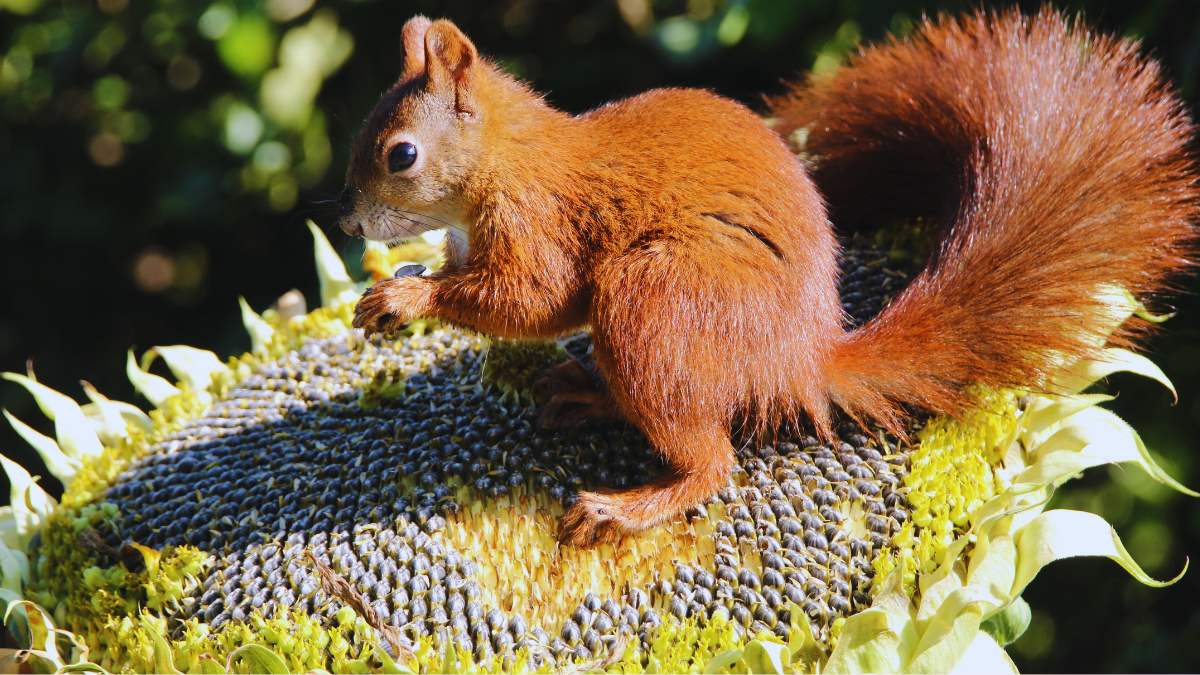
Absolutely! Squirrels love snacking on all sorts of things, including seeds – but do they actually eat sunflower seeds? Well, the short answer is yes! In fact, squirrels have been known to devour entire gardens full of sunflowers just for their delicious seeds. Now here’s the thing – while they may enjoy munching on them, humans typically don’t want our furry friends getting into our prized sunflower patches because we like to save those seeds for ourselves (and sometimes to feed the birds).
But, even with our efforts to keep them out, there’s no guarantee the pesky critters won’t find another tasty seed source nearby. After all, they’re pretty smart cookies! So, take note, folks – whether you’re cultivating your own sunflower garden or simply admiring one in bloom – always be prepared to share your harvest…with any nearby squirrels who happen to drop by!
How To Protect Sunflowers From Squirrels
Fortunately, there are some effective ways to protect your sunflowers from squirrels and enjoy their beauty and bounty. In this article, we will share with you 10 expert tips on how to keep squirrels away from your sunflowers and prevent them from ruining your hard work. Whether you want to use natural repellents, physical barriers, or clever tricks, we have something for you. Read on and discover how to save your sunflowers from squirrels!
Choose a sunflower variety that is less appealing to squirrels
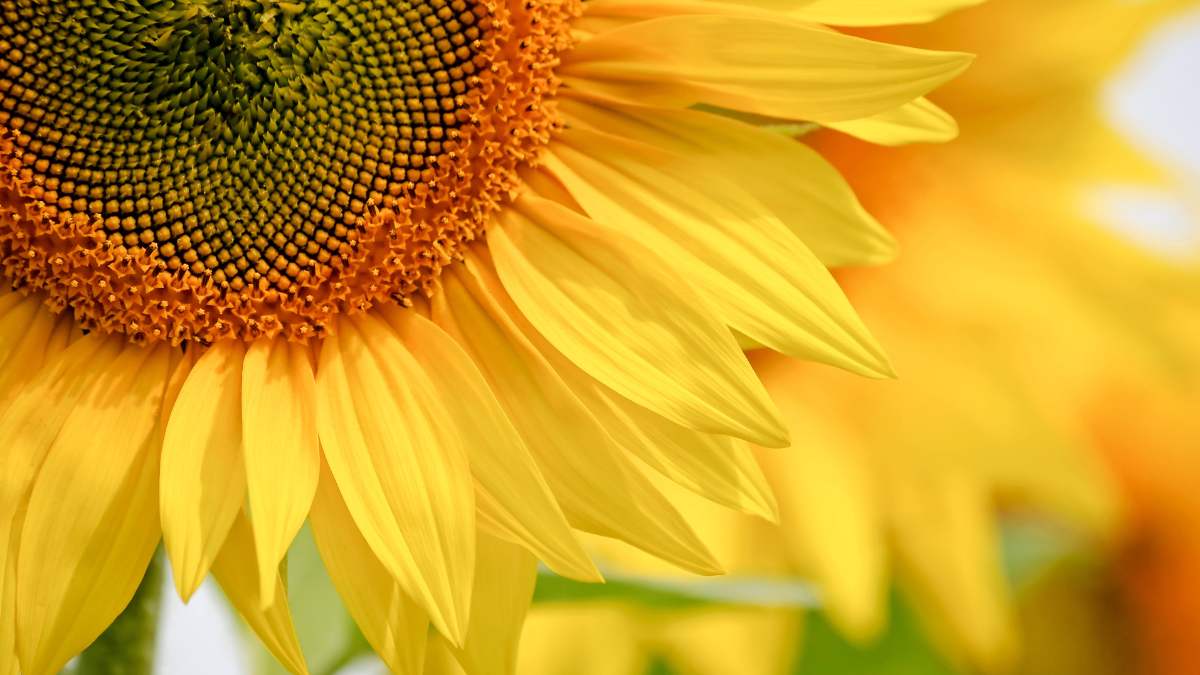
One of the easiest ways to protect your sunflowers from squirrels is to choose a variety that they don’t like. Squirrels are mainly attracted to sunflowers for their seeds, so if you pick a variety that has smaller seeds or thicker shells, you might deter them from eating them. Some examples of sunflower varieties that are less appealing to squirrels are:
- Teddy Bear: This variety has fluffy and double-petaled flowers that look like pom-poms. The seeds are small and hidden in the center of the flower, making them hard for squirrels to access.
- Sunspot: This variety has large and bright yellow flowers with dark brown centers. The seeds are large but have thick, tough shells that squirrels might find difficult to crack.
- Lemon Queen: This variety has pale yellow flowers with light brown centers. The seeds are medium-sized but have a bitter taste that squirrels might not enjoy.
When you go for one of these varieties or others that have similar characteristics, you can reduce the chances of squirrels targeting your sunflowers. However, no matter what you do, some squirrels might still try to eat them out of curiosity or hunger, so you might want to combine this tip with other methods below for better results.
Other Sunflower Varieties that Resist Squirrels
Besides Teddy Bear, Sunspot, and Lemon Queen, there are some other sunflower varieties that are less appealing to squirrels, such as;
- Moulin Rouge: This variety has dark red flowers with black centers. The seeds are small and hard to find among the petals.
- Sunrich Orange: This variety has bright orange flowers with green centers. The seeds are large but have a bitter taste that squirrels might not like.
- Giant Sungold: This variety has huge yellow flowers with fluffy petals. The seeds are hidden in the center of the flower and are difficult to access.
- Autumn Beauty: This variety has multicolored flowers in shades of yellow, orange, red, and bronze. The seeds are small and have a low oil content that squirrels might not find attractive.
- Strawberry Blonde: This variety has pink flowers with yellow tips and dark centers. The seeds are large but have a sour taste that squirrels might not enjoy.
- Sunbright: This variety has yellow flowers with black centers. The seeds are large but have a thick shell that squirrels might have trouble cracking.
So far, I have grown several sunflower varieties that resist squirrels, such as Teddy Bear, Sunspot, and Lemon Queen. I have noticed that squirrels rarely bother them, and they bloom beautifully in my garden. I love their colors, shapes, and sizes, and they make me happy every time I see them. By choosing one of these varieties or others that have similar characteristics, you can also enjoy growing your own sunflowers without worrying about squirrels.
Plant sunflowers in a location that is away from trees, fences, or other structures that squirrels can use to access them
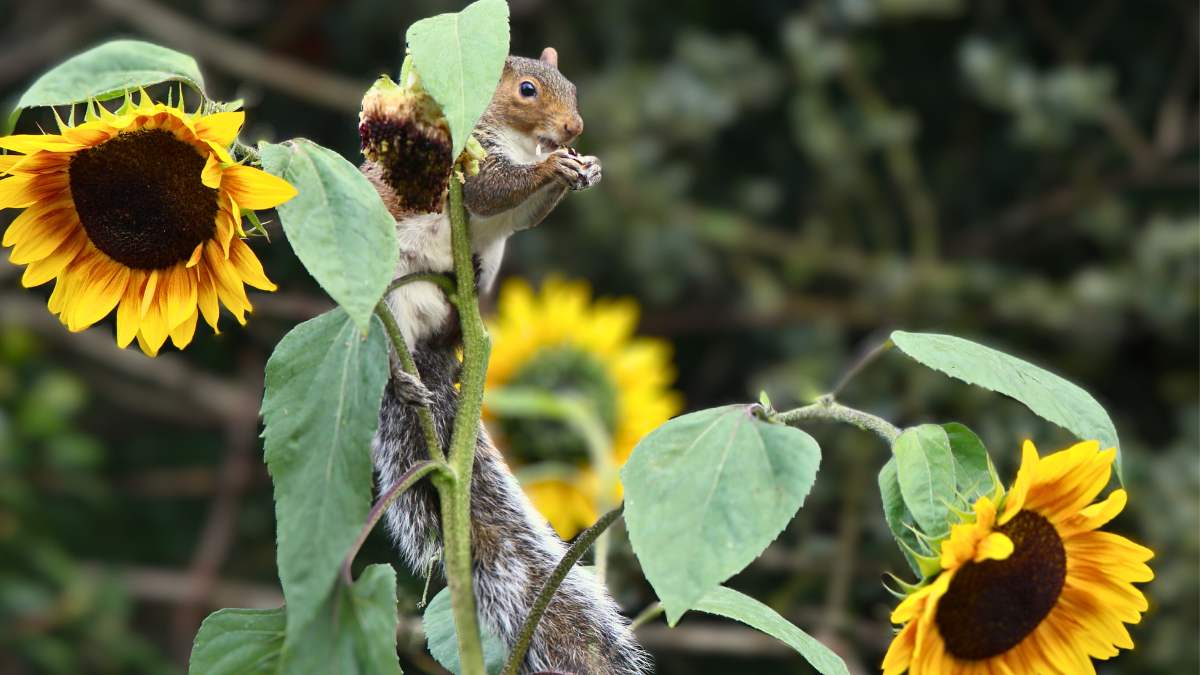
Another way to protect your sunflowers from squirrels is to plant them in a location that is difficult for squirrels to reach. Squirrels are excellent climbers and jumpers, so they can easily access your sunflowers if they are near trees, fences, or other structures that they can use as a bridge.
To prevent this, you should plant your sunflowers in a spot that is at least 10 feet away from any potential squirrel routes. Alternatively, you can use barriers or netting to block the access of squirrels to your sunflowers. For example, you can:
- Wrap a metal or plastic sheet around the base of the sunflower stem to prevent squirrels from climbing up.
- Cover the sunflower head with a mesh bag or a wire cage to prevent squirrels from biting the seeds or petals.
- Surround the sunflower bed with a fence or wall at least 4 feet high and a smooth surface that squirrels cannot grip.
When you plant your sunflowers in a safe location or use barriers or netting to protect them, you can make it harder for squirrels to get to them.
However, I need to warn you that some squirrels might still find a way to bypass these obstacles, so you might want to use this tip along with other methods for better results.
Use repellents or deterrents that are safe for plants and animals
Another way to protect your sunflowers from squirrels is to use repellents or deterrents that are safe for plants and animals. These are substances that have a smell, taste, or texture that squirrels dislike and will avoid. You can apply them to your sunflowers or the surrounding area to discourage squirrels from coming near them. Some examples of repellents or deterrents that are safe for plants and animals are:
- Hot pepper spray: This is a mixture of water and hot pepper flakes or powder that you can spray on your sunflowers or the soil around them. The capsaicin in the peppers will irritate the squirrels’ noses and mouths and make them stay away.
- Garlic oil: This is a mixture of water and garlic cloves or powder that you can spray on your sunflowers or the soil around them. The strong smell of garlic will repel the squirrels and make them lose interest in your sunflowers.
- Predator urine: This is a liquid that contains the urine of animals that prey on squirrels, such as foxes, coyotes, or bobcats. You can buy it online or at some garden stores and sprinkle it around your sunflowers. The scent of predator urine will scare the squirrels and make them think that there is danger nearby.
To prevent squirrels from eating your sunflowers, you can try using natural repellents or deterrents. These products are safer for both plants and animals, but make sure to follow the instructions on the label carefully. Apply the product regularly and after rainfall so that the smell stays strong enough to ward off squirrels. Be mindful not to overuse the product or place it too near your sunflower stalks since this may cause damage.
Grow other squirrel deterrent plants
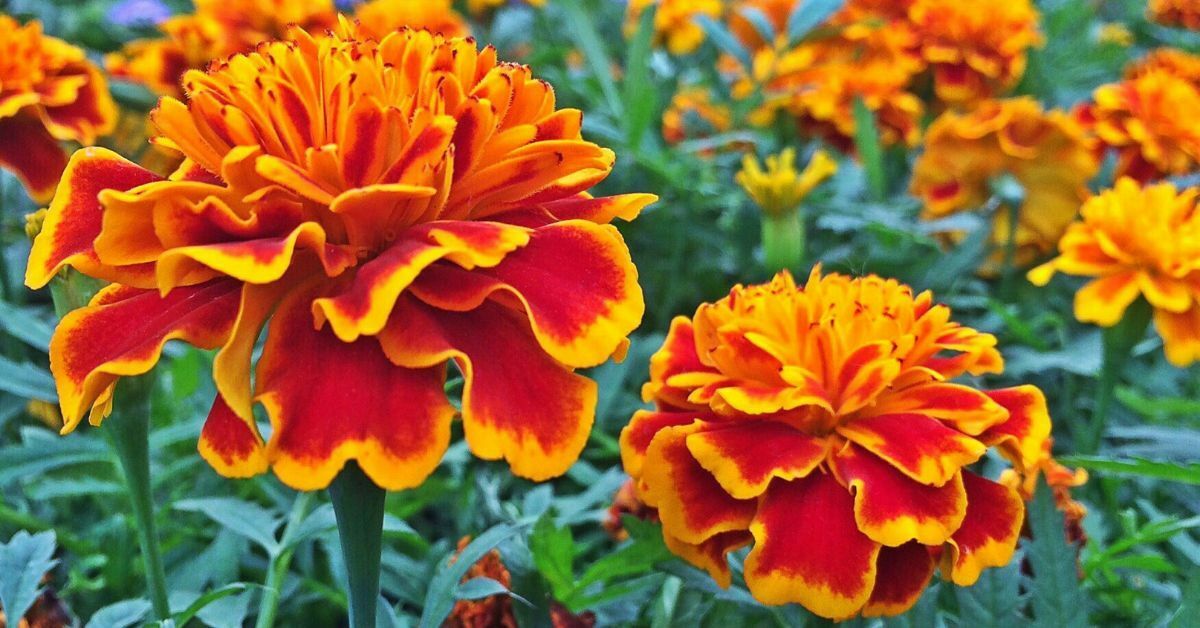
Some plants have natural properties that repel squirrels and other rodents. By growing these plants in your garden, you can create a barrier that discourages squirrels from entering and damaging your crops. Some examples of squirrel deterrent plants are alliums, daffodils, hyacinths, fritillaries, geraniums, lavender, mint, rosemary, and marigolds.
These plants have strong smells or tastes that squirrels find unpleasant or toxic. You can plant them around the edges of your garden or intersperse them among your other plants for maximum effect. However, keep in mind that these plants may not work for all squirrels, especially if they are very hungry or accustomed to them. You may need to combine them with other methods of squirrel control for the best results.
Tips for Growing Sunflowers Successfully
Sunflowers are easy to grow and can brighten up any garden with their cheerful flowers. However, there are some tips that can help you grow them successfully and enjoy their beauty for a long time. Here are some of them:
- Choose the right location: Sunflowers need at least six hours of direct sunlight per day, so make sure you plant them in a sunny spot that is not shaded by trees or buildings. They also prefer well-drained soil that is rich in organic matter and has a pH of 6.0 to 7.5.
- Sow the seeds at the right time: Sunflowers are annuals that grow from seeds and bloom in summer. The best time to sow the seeds is after the last frost date in your area when the soil temperature is above 10°C (50°F). You can either sow them directly in the ground or start them indoors and transplant them later.
- Provide enough space and support: Sunflowers can grow very tall and wide, so make sure you give them enough space to grow and avoid overcrowding. The recommended spacing is 30 to 60 cm (12 to 24 inches) apart for smaller varieties and 60 to 90 cm (24 to 36 inches) apart for larger ones. You may also need to stake or tie them to prevent them from falling over or breaking in strong winds.
- Water and fertilize regularly: Sunflowers need regular watering, especially during dry spells or hot weather. They also benefit from occasional fertilizing, especially during the flowering stage. You can use a balanced fertilizer or a high-potassium one to boost their blooming and seed production.
- Harvest and store properly: Sunflowers are ready to harvest when their petals start to wilt and their backs turn brown. You can cut them off with a sharp knife or scissors and enjoy them as cut flowers or dry them for later use. To dry them, hang them upside down in a warm, dry, and well-ventilated place until their seeds are fully dry. You can then store them in an airtight container or bag and use them as bird food or snacks.
These are some valuable tips for growing sunflowers successfully. If you follow them, you will have a beautiful and productive sunflower garden that will make you smile every day.
Conclusion

As a garden owner, I know how frustrating it can be to deal with squirrels that eat your sunflowers. That’s why I have tried different methods to protect my sunflowers from these pesky rodents. I have found that choosing sunflower varieties that resist squirrels, such as Teddy Bear, Sunspot, Lemon Queen, Moulin Rouge, Sunrich Orange, Giant Sungold, Autumn Beauty, Strawberry Blonde, and Sunbright, is one of the most effective ways to keep them away.
I have grown these varieties in my garden, and I am very satisfied with their beauty and durability. They also attract many bees, butterflies, and birds that help pollinate my plants and create a lively atmosphere. I hope you have learned something from this article and that you will enjoy growing your own sunflowers without worrying about squirrels. If you have any questions or comments, please feel free to leave them below. Thank you for reading, and happy gardening!
FAQ
How do I know when to harvest sunflower seeds?
Sunflower seeds are ready to harvest when the petals start to wilt and fall off, and the back of the flower head turns brown. You can also check the seeds by rubbing them gently with your thumb. If they come out easily and have a hard shell, they are ready to harvest.
To harvest sunflower seeds, you can either cut off the flower head with a sharp knife or scissors or pull out the whole plant from the ground. You can then dry the flower head or the plant in a warm, dry, and well-ventilated place until the seeds are fully dry. You can then remove the seeds from the flower head by rubbing them with your hands or a wire brush. You can then store them in an airtight container or bag in a cool and dark place.
How do I prevent sunflower diseases and pests?
Sunflowers are generally resilient and easy to grow, but they can still be affected by some diseases and pests. Some of the common diseases and pests that affect sunflowers are:
Downy mildew: This is a fungal disease that causes yellow spots on the leaves and white fuzz on the underside of the leaves. It can be prevented by planting resistant varieties, avoiding overhead watering, improving air circulation, and removing infected plants.
Rust: This is another fungal disease that causes brown or black spots on the leaves and stems. It can be prevented by planting resistant varieties, avoiding wet conditions, rotating crops, and applying fungicides if necessary.
Aphids: These are small insects that suck the sap from the leaves and stems, causing them to curl, wilt, or turn yellow. They can also transmit viruses that can harm your plants. They can be prevented by spraying your plants with water or insecticidal soap, releasing beneficial insects such as ladybugs or lacewings, or applying neem oil or other organic pesticides if needed.
What are the benefits of growing sunflowers?
Sunflowers are not only beautiful and cheerful plants, but they also have many benefits for your garden and the environment. Some of the benefits are:
They provide food and shelter for bees, butterflies, birds, and other beneficial insects that help pollinate your plants and control pests.
They produce seeds that are rich in protein, oil, and vitamins that you can use as snacks or bird food.
They improve the soil quality by adding organic matter and nutrients, and by breaking up hard soil with their deep roots.
They reduce water evaporation and weed growth by shading the soil with their large leaves.
They add color and diversity to your garden and create a stunning display when they bloom.
